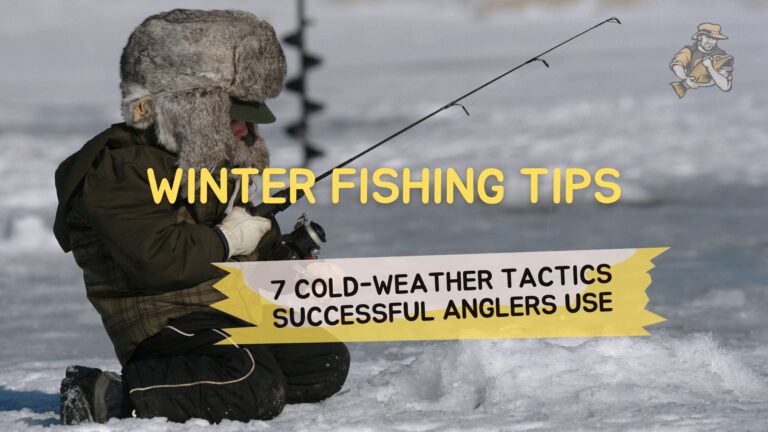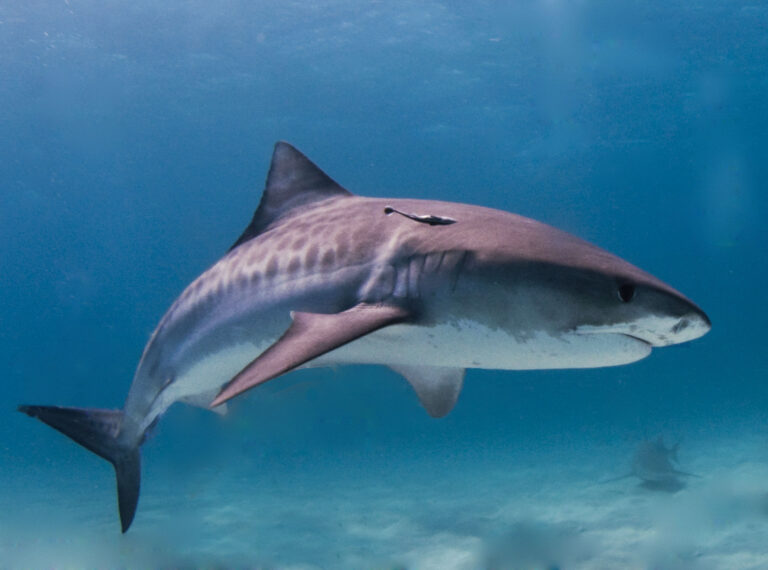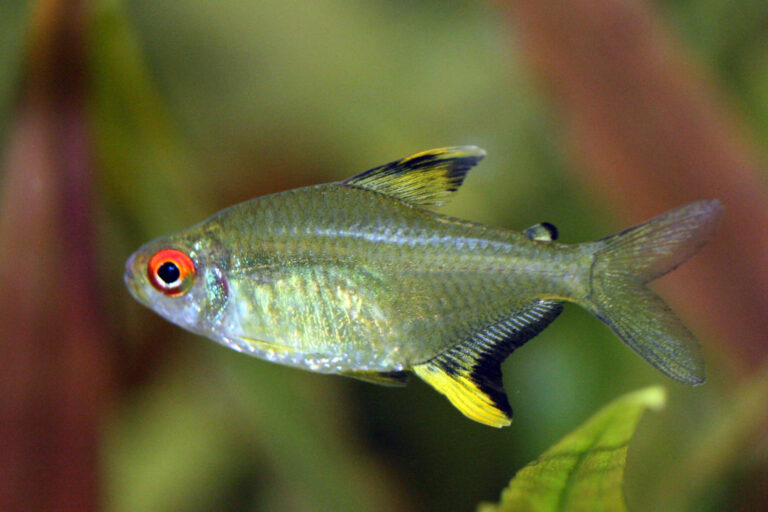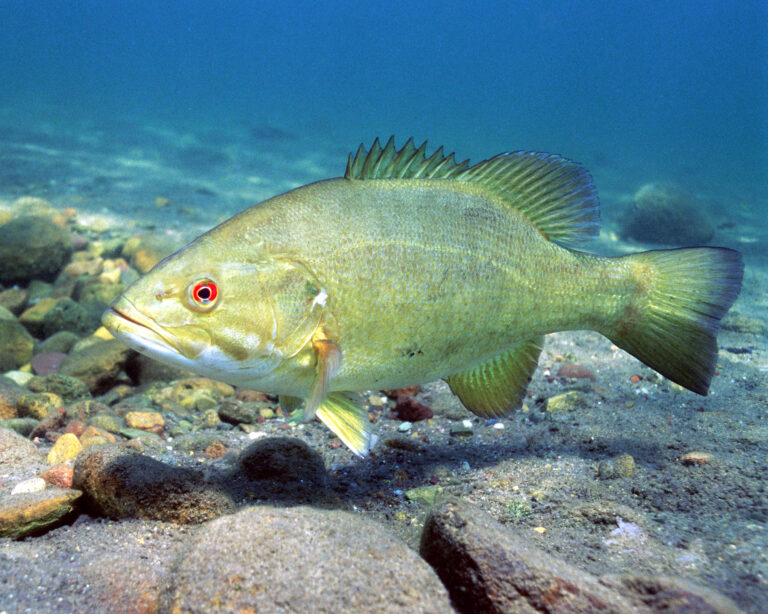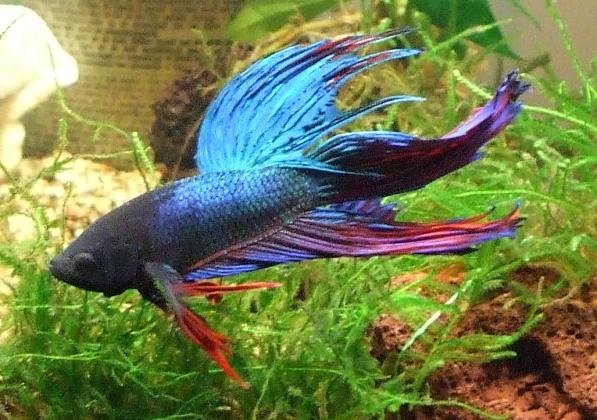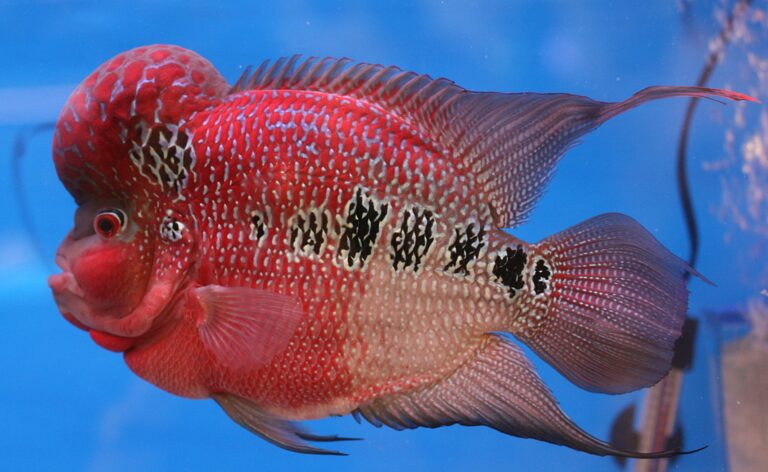Best Fishing Spots in California: Lakes, Rivers, and Coastal Hotspots
By Adam Hawthorne | Last Modified: May 14, 2025
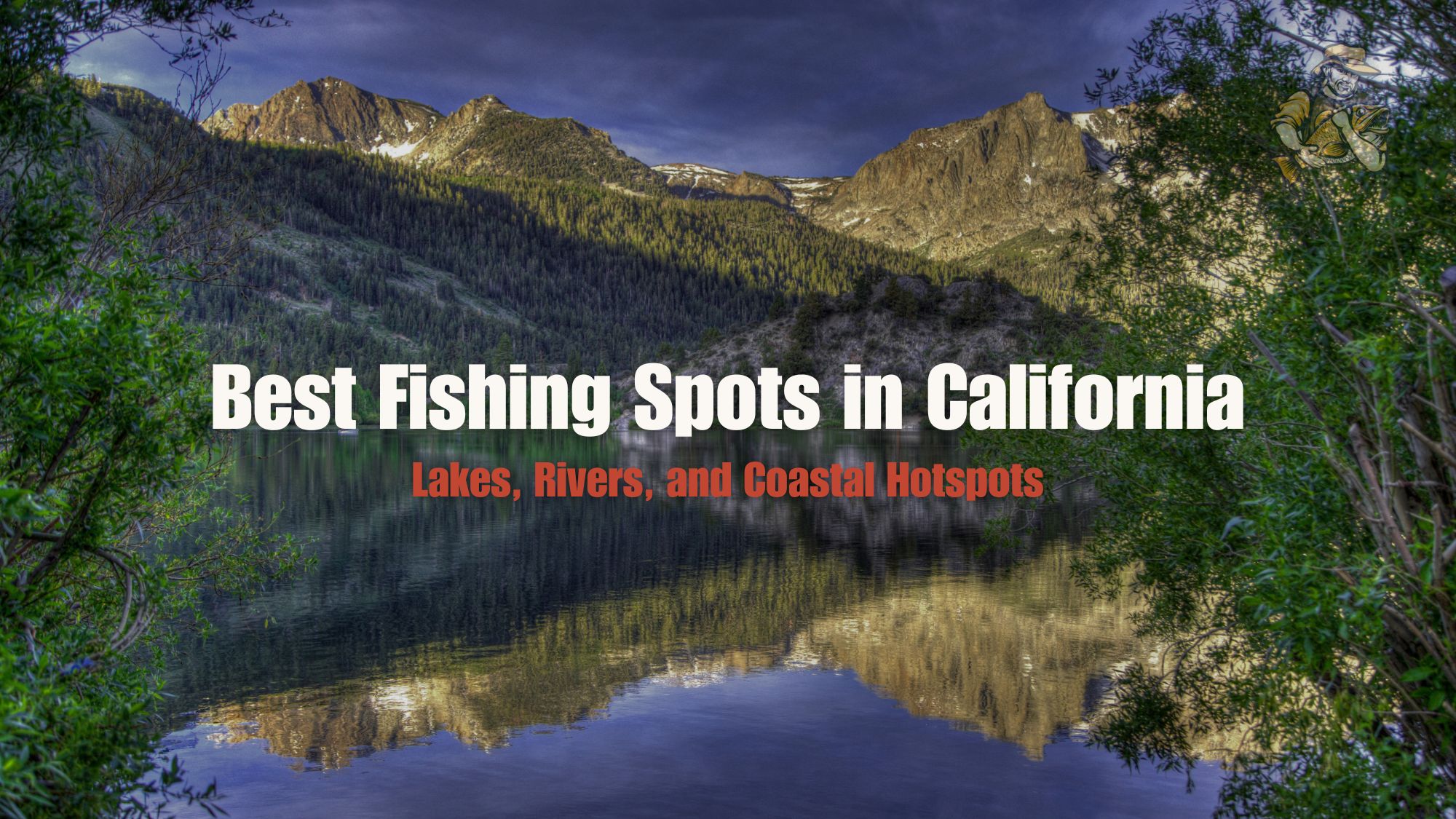
California fishing has always struck me as a study in beautiful contradictions. From snow-fed alpine lakes to sweltering desert reservoirs, this state packs more fishing diversity into its borders than most countries can claim. I’ve been lucky enough to wet a line in about two dozen California fisheries over the years, and each trip leaves me itching to explore more.
My first California fishing adventure happened back in 2011 – a somewhat disastrous attempt at targeting Lake Tahoe mackinaw with my brother-in-law Michael. We got skunked despite hiring a guide who’d supposedly “never been shut out before.” Pretty sure he still tells the story of the Michigan guy who brought bad luck to his boat. But that initial failure sparked a decade-plus relationship with California’s waters that’s produced some of my most memorable catches.
Let’s dive into the best fishing spots this incredible state has to offer, broken down by regions and fishery types. I’ll share both the tourist hotspots and a few lesser-known gems that locals might prefer I keep quiet about.
Northern California Fishing: Where Trophy Potential Meets Wild Beauty
Northern California offers some of the most pristine fishing opportunities in the state, with a perfect mix of well-managed put-and-take fisheries alongside truly wild waters. The region’s relatively lower fishing pressure (compared to SoCal) makes for a more relaxed experience with legitimate trophy potential.
Shasta Lake: Multi-Species Heaven With Room to Roam
Shasta sits at the top of my California lake list for good reason. This massive reservoir offers year-round fishing with legitimate opportunities for trophy catches across multiple species. On my last visit in 2022, I landed a 5.2-pound spotted bass on a drop-shot rig in Jones Valley arm, which isn’t even considered particularly noteworthy by Shasta standards.
What makes Shasta special is its size – even on holiday weekends, you can find secluded coves and points away from the jet ski crowds. The lake’s countless underwater structures, from submerged bridges to old roadbeds, create perfect ambush points for predatory fish.
Target species include:
- Spotted bass (the dominant black bass species)
- Largemouth bass
- Smallmouth bass
- Rainbow trout
- Brown trout
- Landlocked king salmon
- Crappie
- Catfish
The best fishing typically occurs from February through June for bass, with April-May being prime time according to local guide services who specialize in Shasta. During summer months, focus on deeper structure as fish retreat from the heat, often suspending in the thermocline.
If you’re targeting trout or salmon, trolling near submerged creek channels in the upper arms can be productive. My buddy Dave swears by trolling with Needlefish lures at 2.2 mph, occasionally stalling the boat to trigger reaction strikes. He uses almost exclusively silver/blue patterns, though I’ve had better luck with copper/red Tiger pattern Speedy Shiners.
Don’t overlook the Sacramento River arm in late fall – some of the lake’s biggest browns move up to stage for their spawning run, creating a legitimate trophy opportunity. Just keep in mind that regs can be complex around the river-lake transition zones.
For shore anglers, Jones Valley and Silverthorn offer some good bank access, though a boat (rental or personal) unlocks Shasta’s true potential.
Trinity Lake: The Bass Factory You’ve Been Overlooking
About 30 minutes west of Shasta sits the significantly less crowded Trinity Lake, and honestly, that’s how locals like Tom at the tackle shop in Weaverville prefer it stays. “We don’t need another Clear Lake situation here,” he told me when I was buying minnows last September, referring to Clear Lake’s explosion in fishing pressure.
Trinity’s smallmouth bass fishing is legitimately world-class, with 4+ pound bronzebacks common enough that they don’t generate much excitement among regulars. The shoreline’s countless rock piles and points create perfect smallmouth habitat, and the fish grow fat on the lake’s abundant crawfish population.
In late May 2019, I had one of those magical mornings that keep you coming back to a place – landed 22 smallmouth in about 3 hours, with 5 fish over 3 pounds, all on drop-shot rigs with 4″ morning dawn Roboworms. Started at first light working steep banks near Stuart Fork, and the bite stopped like someone flipped a switch around 9:30 AM when pleasure boat traffic picked up.
Beyond smallmouth, Trinity holds:
- Largemouth bass
- King salmon
- Rainbow trout
- Brown trout
- Kokanee salmon
What Trinity lacks in amenities compared to Shasta, it makes up for in natural beauty and lower fishing pressure. The Stuart Fork arm tends to be less crowded than the main lake, and the Trinity Alps backdrop makes for some stunning photos when you’re hoisting that trophy smallie.
According to local anglers I’ve chatted with, Trinity sees far fewer tournament circuits than other California bass factories, meaning the fish receive less pressure and exhibit less conditioned behavior. This has certainly matched my experience – Trinity bass seem considerably more willing to commit to topwater baits than their heavily-pressured cousins in more famous waters.
The lake typically fishes best from April through October, with May-June offering peak smallmouth activity as they move shallow to spawn. Access can be somewhat limited during drought years, so check water levels before making a long trip.
Clear Lake: America’s Oldest Lake Is a Largemouth Factory
If you’re looking to cross a 10+ pound largemouth off your bucket list, Clear Lake deserves serious consideration. This massive natural lake (despite the name, it’s usually a murky green from algae) consistently ranks among the top bass lakes in the country, and for good reason.
Clear Lake’s rich ecosystem, anchored by massive schools of threadfin shad and an endless supply of jumbo crawfish, grows largemouth bass at an astonishing rate. The lake’s abundant tule-lined shorelines, docks, and weed beds provide ideal bass habitat throughout the year.
During a three-day trip in April 2021, my fishing partner Tommy and I boated 67 bass, including an 8.4-pounder that hit a black/blue jig pitched to a dock piling in Henderson Bay. While that fish was my personal Clear Lake best, locals weren’t particularly impressed – double-digit bass are caught with enough regularity that only true giants make the local tackle shop’s brag board.
Multiple tournament reports from late 2024 show 25+ pound five-fish limits, with several 30+ pound bags during spring events. That level of productivity is almost unheard of outside the prime bass factories of Mexico or Florida.
The downside? Clear Lake’s reputation means heavy fishing pressure, especially on weekends and during major tournaments. Finding productive water that hasn’t seen a dozen boats already can be challenging during peak season. Local legend Bobby at the Clearlake Bait and Tackle shop suggested, “If you can fish weekdays, do it. The lake fishes completely different without tournament boat traffic.”
Beyond bass, Clear Lake offers excellent crappie and catfish opportunities, with some channel cats pushing 20+ pounds. The crappie fishing can be exceptional during spring around submerged brush and docks, particularly in the Clearlake Oaks area.
One local secret that Bobby reluctantly shared: during summer algae blooms when the main lake looks like pea soup, the Lakeport and Nice areas often remain clearer due to underwater springs. These clearer zones can concentrate bass seeking better water quality.
Sierra Nevada Mountain Lakes and Streams: High Country Dreamland
The Sierra Nevada mountain range offers some of California’s most beautiful – and sometimes most challenging – fishing opportunities. Having grown up fishing Michigan’s relatively flat landscape, the stunning backdrop of jagged peaks reflecting on crystal-clear mountain lakes never gets old.
Lake Tahoe: Deep, Clear, and Challenging
Let’s start with the big one – in every sense. Lake Tahoe is America’s largest alpine lake, and it’s a challenging but rewarding fishery for those willing to put in the time.
My first Tahoe trip was that infamous skunk session mentioned earlier, but I’ve since returned and found success by learning to adapt to the lake’s unique characteristics. Tahoe’s incredible clarity (you can often see 70+ feet down) means fish can spot you coming from a mile away. Ultra-light line, natural presentations, and often fishing deeper than you’d expect are keys to success.
The lake’s mackinaw (lake trout) are the primary draw for many anglers, with fish averaging 3-7 pounds but with legitimate 20+ pound potential. Trolling at 150-200 feet deep with downriggers is standard practice, focusing on underwater shelves and dropoffs.
During a return trip in 2018, I finally cracked the Tahoe code, landing a 12-pound mackinaw while jigging a 1-ounce white tube bait in 120 feet of water near Crystal Bay. The fish fought like it was half its size thanks to the cold water, but seeing that prehistoric-looking creature come up from the depths made the previous failures worthwhile.
Kokanee salmon provide faster action when you locate schools, typically suspending over deeper water. These landlocked sockeye rarely exceed 2 pounds but are excellent table fare and can provide consistent action when the mackinaw get lockjaw.
Brown and rainbow trout cruise the shallower shelves, particularly in spring and fall when water temperatures are more comfortable for them.
If you’re visiting Tahoe, consider hiring a guide for at least your first day – this lake has a steep learning curve, and local knowledge can make the difference between success and another frustrating skunk. Most guides launch from either South Lake Tahoe or Tahoe City, depending on where the bite is strongest.
Eastern Sierra Trout: Highway 395’s Famous Waters
The Eastern Sierra region along Highway 395 represents trout fishing paradise, with dozens of productive lakes, reservoirs, and streams. This area hosts California’s trout opener celebration (typically the last Saturday in April), drawing anglers from across the state.
Crowley Lake deserves special mention, as it produces some of the largest rainbow and brown trout in the region. Opening weekend can be absolute chaos, with hundreds of boats launching before dawn, but the fishing can be extraordinary.
During the 2017 opener, I arrived at 4:30 AM to find the launch line already backed up halfway to the highway. The chaos was worth it though – landed 11 rainbows between 14-18 inches, mostly on Thomas Bouyant spoons in firetiger pattern. I’ve since learned to avoid opening weekend and instead visit 2-3 weeks later when the crowds thin but the fishing remains excellent.
The Upper, Middle, and Lower Owens River offer diverse trout fishing opportunities, from technical dry fly fishing in the Upper Owens to more accessible rainbow trout water in the Middle section. The year-round catch-and-release section of the Upper Owens can produce some surprisingly large browns, especially for those willing to fish streamers during off-peak hours.
Conway Summit lakes (Virginia, Twin, and Green) provide more intimate trout fishing experiences, with Virginia Lake being particularly productive for shore anglers. These smaller lakes typically receive regular trout plants and can fish exceptionally well during late spring and early summer before warming temperatures push trout deeper.
June Lake, Gull Lake, Silver Lake, and Grant Lake (collectively known as the June Lake Loop) offer excellent trout fishing in a spectacular setting. Each has its own character, with June and Silver typically producing larger trout while Gull offers easier access and more consistent action for families and beginners.
I’ve had my best success in this area with classic presentations – PowerBait for recently stocked rainbows and small Panther Martin spinners in gold/red for wild or holdover trout. Tom at Ernie’s Tackle in June Lake suggests, “If you want bigger fish, go with nightcrawlers under a bobber near creek inlets, especially at first and last light.”
Yosemite Area Streams: Technical Challenges in Paradise
The streams within and around Yosemite National Park offer some of California’s most technical – and rewarding – trout fishing. The Merced and Tuolumne Rivers host wild rainbow and brown trout populations that see enough pressure to make them legitimately challenging.
These aren’t the waters for anglers seeking limits of pan-sized fish. Rather, they offer the chance to catch truly wild trout in one of America’s most spectacular settings. Success here typically means covering lots of water, making precise casts to likely holding areas, and accepting that quality typically trumps quantity.
On a late September trip to the park in 2020, I managed just 6 trout from the Merced in a full day of fishing, but each was a perfect wild rainbow between 10-13 inches, with colors so vibrant they barely looked real. I worked a 2-mile section using a 3-weight fly rod with #16 Royal Wulff dries and #18 Pheasant Tail nymphs as a dropper.
Park regulations typically restrict anglers to artificial lures with barbless hooks, so check current regulations before heading out. The extra effort required to fish these waters means less pressure and a more peaceful experience than many of the region’s more accessible fisheries.
For those not comfortable reading water and identifying likely trout lies, consider booking a day with a guide from one of the fly shops in Oakhurst or Mammoth Lakes. A good guide can dramatically shorten the learning curve on these technical waters.
Southern California Fishing: Urban Opportunities and Desert Oases
Southern California’s fishing scene often gets overshadowed by the state’s more famous northern waters, but impressive opportunities exist for those who know where to look. From urban lakes stocked with trout to desert reservoirs holding trophy bass, SoCal can produce memorable fishing trips.
Castaic Lake: Trophy Bass Minutes from Los Angeles
Sitting just 45 minutes from downtown LA (traffic permitting), Castaic Lake represents one of America’s most accessible trophy bass fisheries. This reservoir shot to fame in the early 1990s when it produced a string of bass over 15 pounds, including several fish challenging the state record.
While those glory days have somewhat faded, Castaic still produces impressive largemouth, with 10+ pound fish caught annually. The lake also hosts a quality striped bass fishery, with fish averaging 3-7 pounds but with specimens over 30 pounds possible.
I’ve only fished Castaic once, during a business trip to LA in 2018. Despite having just a 4-hour window and renting a bass boat from the marina, I managed 7 largemouth up to 4.2 pounds throwing a 10″ Berkley Power Worm (watermelon red) on points near the dam. The guide at the tackle shop suggested I’d done well for a weekday afternoon but added, “You should see what comes out of here at night during summer.”
What makes Castaic unique is its structure – countless points, coves, and submerged brush provide ideal bass habitat. The upper lake (Castaic Lagoon) is managed separately and receives regular trout plants during winter, offering more family-friendly fishing.
According to local tournament results from early 2025, the Necktie Canyon and Fish Arm areas have been particularly productive for quality largemouth. The west ramp area holds some of the lake’s better spotted bass, a species that’s gained an increasing foothold in recent years.
Weekends can be challenging due to heavy recreational boat traffic, particularly during summer. Serious anglers typically hit the water at dawn and focus on their primary targets before the jet skis and pleasure boats arrive.
Lake Perris: The Resurrection of a SoCal Bass Factory
Lake Perris has experienced a remarkable resurrection in recent years. After being partially drained for dam repairs from 2005-2017, the lake refilled and flooded new vegetation, creating ideal bass habitat. This “new lake effect” has rejuvenated the fishery, making it one of SoCal’s most consistent producers.
During the drawdown period, the lake’s reputation suffered as low water concentrated fish but limited access. Since refilling, Perris has returned to prominence with impressive catches of both largemouth and Alabama spotted bass.
I’ve yet to fish Perris personally, but my California fishing contact Jake regularly sends me photos of 5+ pound largemouth caught around the flooded brush near the east end. His specific advice: “Fish the outer edges of the brush lines with crawfish-pattern jigs, especially areas where the brush meets rocky structure.”
Beyond bass, Perris hosts a quality population of bluegill and redear sunfish, with trophy redears (1+ pounds) possible around the lake’s many rock piles. These panfish provide excellent action for young anglers or those seeking a more relaxed fishing experience.
Diamond Valley Lake: The Trophy Factory
Opened to fishing in 2003, Diamond Valley Lake quickly established itself as one of California’s premier fisheries. This relatively new reservoir was managed from day one with trophy fishing in mind, and the results speak for themselves.
The lake holds impressive populations of:
- Largemouth bass
- Smallmouth bass
- Striped bass
- Rainbow trout
- Bluegill
- Catfish
What makes Diamond Valley special is its consistent production of quality fish across multiple species. This isn’t a lake where you’ll catch dozens of bass in a day, but the ones you do catch will often be impressive.
My sole trip to Diamond Valley came in February 2020, just before COVID shut everything down. In a full day of fishing, my partner and I landed just 9 bass, but they included a 7.2-pound largemouth and a 4.9-pound smallmouth – both personal bests for California at that time. We focused on deep drop-offs near the dam using jigs and drop-shot rigs.
Access at Diamond Valley is somewhat restricted compared to other SoCal reservoirs – no private boats with gas motors are allowed, meaning you either need to use a rental from the marina or bring a kayak/electric-only boat. This limitation actually benefits the fishery by reducing pressure and allowing for more strategic management.
Winter presents one of the best opportunities for trophy largemouth, with big fish moving shallower to feed during stable weather periods.
For trout anglers, the lake receives regular plants during winter months, with some impressively large rainbows stocked each year. The east end near the inlet tends to produce the best trout action immediately after stocking, while those seeking holdover trout should focus on deeper water near the dam.
California Coastal Fishing: Where Freshwater Meets the Pacific
California’s coastal fishing opportunities rival any in the world, from iconic salmon and steelhead rivers to productive surf fishing beaches and rocky inshore marine environments. These areas represent some of my favorite fishing in the state, blending challenging techniques with absolutely spectacular settings.
Russian River: Steelhead Alley
The Russian River represents one of California’s best opportunities for steelhead, particularly during winter months when adult fish make their spawning run. This isn’t the place for steelhead beginners – these fish see significant pressure and require precise presentations, but the rewards can be substantial.
My introduction to Russian River steelheading came courtesy of my friend Mark’s father, a 30-year veteran of these waters. We spent a rainy December weekend in 2016 drifting roe clusters and bouncing jigs through deep runs, managing just three hookups over two full days, landing only one – a chrome-bright 8-pound hen that remains one of my most memorable California catches.
The lower river below Guerneville typically holds the most fish, particularly after significant rain events raise and color the water. According to veteran guide Tim, “The first few days after the river drops and clears from chocolate milk to emerald green – that’s when magic happens.”
Access can be challenging in some sections, with private property limiting bank fishing opportunities. Drift boats provide the best experience, allowing anglers to cover significant water while accessing productive runs inaccessible from shore.
Besides winter steelhead, the Russian hosts a smaller summer run, plus resident rainbow trout and smallmouth bass in specific sections. The diverse fishery means something’s always biting if you adjust tactics accordingly.
Current regulations typically restrict anglers to artificial lures with barbless hooks during steelhead season, with specific sections designated catch-and-release only. Always check the most recent regulations before fishing, as these can change annually based on run strength.
Smith and Klamath Rivers: The Wild North Coast
California’s northernmost coastal rivers – particularly the Smith and Klamath – represent some of the state’s last truly wild steelhead and salmon fisheries. These remote rivers fish completely differently than their more accessible southern counterparts, with larger fish and more pristine conditions.
I’ve only fished the Smith once, on a guided trip in January 2019. Despite torrential rain and marginal conditions, we managed two steelhead – one a wild buck estimated at 12-14 pounds that took a pink/white Clousser streamer swung through a tail-out. According to our guide, that represented a “slow day” by Smith standards.
What makes these northern rivers special is their relatively healthy wild fish populations. While many California steelhead streams rely heavily on hatchery programs, the Smith and portions of the Klamath still produce significant numbers of wild, native steelhead and salmon.
The remote location means less pressure but also more challenging logistics. According to locals I spoke with, finding accommodations during prime season (December-February) requires advance planning, as options are limited in these sparsely populated areas.
For those making the journey, hiring a guide for at least your first day makes sense – these rivers are large, the prime runs aren’t obvious to the untrained eye, and local knowledge dramatically increases success rates. Most guides launch from either Crescent City (for the Smith) or Klamath (for the Klamath River).
Fall brings significant king salmon runs to both rivers, offering the chance at fish exceeding 30 pounds. Local fishing reports from the Smith River region suggest focusing on deep holes after the first significant autumn rains trigger the upstream migration.
Monterey Bay: Salmon, Rockfish, and Lingcod
Monterey Bay represents one of California’s most productive marine fisheries, accessible to both boat and shore anglers. The bay’s deep submarine canyon creates upwelling that concentrates baitfish, which in turn attracts predatory species from salmon to white seabass.
Charter operations out of Monterey and Santa Cruz provide access to exceptional salmon fishing during open seasons (typically April-October, though regulations vary annually). These ocean-bright king salmon average 8-15 pounds, with larger specimens possible, especially during May-June when the first major schools arrive.
On a July trip out of Moss Landing in 2018, four of us limited out on kings by 10 AM, with my largest pushing 22 pounds. We trolled anchovy-colored Apex lures behind downriggers at 40-65 feet over the canyon edges. What was remarkable wasn’t just the catch but the setting – we had whales breaching within 100 yards of the boat throughout the morning.
For those without boat access, the rocky shorelines from Pacific Grove to Santa Cruz offer excellent shore fishing for rockfish, cabezon, and the occasional lingcod. Essential gear includes medium-heavy spinning setups, heavy (2+ oz) lead jigheads, and swimbaits or strips of squid. Focus on high tide periods when fish move closer to shore to feed.
According to local anglers I’ve chatted with at tackle shops in Monterey, the fishing has remained surprisingly consistent despite increased pressure. One shop owner suggested, “The key is being willing to move – if one spot isn’t producing after 30 minutes, pack up and try somewhere with different structure or current patterns.”
Regulations for ocean fishing change frequently based on conservation needs, so always check current rules before heading out. Special restrictions often apply to rockfish seasons, bag limits, and depth restrictions, particularly during certain months.
Urban Fishing Opportunities: SoCal’s Stocked Lakes
For those near major urban centers, California offers surprisingly good fishing through aggressive stocking programs that maintain fisheries in city and county parks. These waters provide accessible opportunities for anglers without the time or resources for destination trips.
Los Angeles Area Urban Lakes
The greater LA area hosts dozens of regularly stocked lakes, with trout plants during winter months and catfish during summer creating year-round fishing opportunities. While these aren’t wilderness experiences, they provide legitimate chances at quality fish without leaving the city.
Among the best options:
Santa Fe Dam Recreation Area receives consistent trout plants from November through March, with fish typically running 1-2 pounds with occasional larger specimens. The lake’s relatively large size means fish aren’t as concentrated (or pressured) as in smaller urban waters.
Whittier Narrows offers good catfish action during summer months, with channel cats averaging 2-4 pounds but with whiskerfish exceeding 10 pounds caught regularly. The multiple lakes within this recreation area allow anglers to spread out even on busy weekends.
Puddingstone Reservoir provides one of the more diverse urban fisheries, with opportunities for largemouth bass, trout (in winter), and panfish throughout the year. The lake’s varied structure creates distinct fishing zones, from shallow weedy areas productive for bass to deeper channels holding trout after stocking events.
During a quick evening session at Puddingstone in 2021, I managed 5 largemouth up to 2.5 pounds throwing a weightless Senko in watermelon/black flake around submerged trees near the day-use area. Nothing remarkable size-wise, but the ability to catch solid bass within view of downtown LA skyline remains impressive.
The trade-off with urban fisheries is obvious – you’ll rarely have the water to yourself, especially on weekends and immediately after stocking events. The upside is accessibility, predictability, and the ability to fish quality waters without dedicating an entire day to travel.
California Delta: America’s Most Diverse Freshwater Fishery
The California Delta represents possibly the most diverse freshwater fishery in America, with over 1,000 miles of waterways creating endless fishing options. This massive estuary where the Sacramento and San Joaquin Rivers meet the San Francisco Bay hosts impressive populations of:
- Largemouth bass
- Striped bass
- Sturgeon
- Salmon (seasonal)
- Catfish
- Crappie
- Bluegill
- Many more species
The Delta’s appeal lies in its vastness and variety – you could fish here weekly for years without covering all its productive areas. This same quality makes it intimidating for first-time visitors, as finding fish amid countless sloughs, channels, and backwaters requires considerable knowledge.
I’ve made three multi-day trips to the Delta, each focusing on different target species. The most successful was a June 2017 bass trip where my buddy Tommy and I boated 47 largemouth over three days, including a personal-best California bucketmouth that pushed 9.5 pounds – a true trophy anywhere outside Florida or Texas.
We focused on tidal movement patterns, fishing outgoing tides around tule berms and submerged rock piles, primarily with punch rigs (1.5 oz weights with Reaction Innovations Sweet Beavers) and ChatterBaits along weed edges. What’s remarkable about Delta bass is their aggressive feeding behavior compared to fish in clear reservoirs – they often hit baits with reckless abandon rather than the subtle takes common in pressured waters.
The tidal nature of the Delta creates unique fishing patterns, with successful anglers tracking tide schedules as carefully as weather forecasts.
Delta striped bass create their own dedicated following, particularly during spring and fall runs when fish migrate between the bay and upriver spawning grounds. These hard-fighting fish average 5-10 pounds, with legitimate 30+ pound trophies caught annually, primarily on trolled or cast swim baits and live bait rigs.
For the truly ambitious, Delta sturgeon offer the chance at true river monsters exceeding 6 feet and 100 pounds. These prehistoric fish require specialized heavy tackle and plenty of patience, but the reward can be the fish of a lifetime. One tackle shop owner in Rio Vista described hooking a sturgeon as “like hooking a Volkswagen that suddenly grows wings.”
Navigation in the Delta demands attention, as unmarked submerged hazards claim props and lower units regularly. First-time visitors should consider hiring a guide to learn the basics of Delta navigation and productive fishing patterns before venturing out independently.
California Fishing FAQ
When is the best time to fish in California?
This entirely depends on target species and location. For trout in the Sierra Nevada, late spring through early summer (May-July) typically offers the best combination of accessibility and productivity. For bass in reservoirs, spring (March-May) produces most trophy fish, while fall (September-November) often delivers consistent numbers.
Coastal steelhead fishing peaks during winter months (December-February) when adult fish make their spawning runs. Ocean salmon season typically runs April-October, with May-June often producing the largest kings.
The beauty of California fishing is its year-round nature – something’s always biting somewhere in the state, regardless of season.
Do I need a fishing license in California?
Absolutely. California requires a valid fishing license for anglers 16 years and older in almost all public waters. The main exceptions are charter boats in ocean waters (where the vessel typically covers licensing) and designated free fishing days (usually two per year).
Licenses can be purchased online through the California Department of Fish and Wildlife website, at sporting goods stores, or at many bait shops. Annual licenses are valid from January 1 through December 31, regardless of purchase date, so buying early in the year maximizes value.
Beyond the base license, additional validations or report cards may be required for certain species (steelhead, sturgeon, salmon) or when fishing in the ocean. Check current regulations before your trip.
What fishing regulations should I know about in California?
California’s fishing regulations are complex and vary significantly by water body, species, and season. Rather than attempting to memorize statewide rules, I strongly recommend:
- Download the current California Fishing Regulations booklet
- Check for any special regulations applying to your specific destination
- When in doubt, follow the more restrictive rule
Some broadly applicable regulations include:
- Most lakes and reservoirs have a five-bass limit with a minimum size of 12 inches
- Trout limits typically range from 2-5 fish depending on the water body
- Many premium trout waters have special gear restrictions (artificial lures only, barbless hooks)
- Ocean fishing has distinct seasons and limits that change annually based on fish populations
One common mistake involves assuming regulations are consistent across similar waters. In reality, two neighboring lakes might have completely different rules based on management goals and fish populations.
Where can I find current fishing reports for California waters?
Several reliable sources provide regularly updated fishing information:
- Regional tackle shops (call ahead for current conditions)
- California Department of Fish and Wildlife reports
- Online fishing forums dedicated to California waters
- Charter captain reports for coastal areas
The most accurate information typically comes from tackle shops in the immediate vicinity of your destination. Most shops have no incentive to provide misleading reports – they want you to catch fish so you’ll return as a customer.
Final Thoughts on California Fishing
After fishing across most of the United States and parts of Canada, I can confidently say California offers the most diverse freshwater and coastal fishing opportunities of any state. From tiny mountain streams to sprawling reservoirs and wild coastal rivers, the variety is simply staggering.
What impresses me most isn’t just the quality of individual fisheries but how these opportunities exist in such proximity to each other. During one memorable week in 2019, I caught trout in the Eastern Sierra, largemouth bass in Clear Lake, and salmon in Monterey Bay – a fishing grand slam that would require crossing multiple states elsewhere.
If you’re planning your first California fishing trip, don’t try to cover too much ground. Pick a region that interests you, do your homework on seasonal patterns and regulations, and immerse yourself in what that area offers. The depth of fishing opportunity in each region rewards specialization far more than trying to sample everything in a single trip.
And if you’re lucky enough to live in California, take the time to explore beyond your home waters. Some of the state’s best fishing experiences happen in places that never make the magazine covers or tournament circuits – small creeks holding native trout, hidden Delta sloughs with outsized bass, or coastal access points where surf perch gather during winter storms.
California’s waters have provided me with some of my most memorable fishing experiences – not always the biggest fish, but certainly some of the most beautiful settings and unique opportunities I’ve encountered. From watching the sunrise over Mount Shasta while trolling for trout to feeling the power of a chrome-bright steelhead in a coastal river surrounded by redwoods, these are fishing memories that transcend just catching fish.

Meet Adam Hawthorne
I’m a lifelong fishing enthusiast who’s spent years exploring rivers, lakes, and oceans with a rod in hand. At Fishing Titan, I share hands-on tips, honest gear reviews, and everything I’ve learned about fish and ocean life, so you can fish smarter and enjoy every cast.
Share:

Meet Adam Hawthorne
I’m a lifelong fishing enthusiast who’s spent years exploring rivers, lakes, and oceans with a rod in hand. At Fishing Titan, I share hands-on tips, honest gear reviews, and everything I’ve learned about fish and ocean life, so you can fish smarter and enjoy every cast.
Related Articles
-
Winter Fishing Tips: 7 Cold-Weather Tactics Successful Anglers Use
Most anglers pack away their gear when the temperature drops, but the dedicated few know something the others don’t: winter fishing can be incredibly rewarding…
-
Mickey Mouse Platy
The Mickey Mouse Platy (*Xiphophorus maculatus*) stands as one of the most recognizable and beloved freshwater aquarium fish in the world, distinguished by its characteristic…
-
Tiger Shark
The Tiger Shark (Galeocerdo cuvier) represents one of the ocean’s most formidable apex predators, earning its distinctive name from the dark vertical stripes that adorn…
-
North Jersey Fishing Guide: Best Lakes, Rivers & Seasons
If you’ve never experienced the fishing in North Jersey, you’re missing out on some genuinely underrated angling opportunities. From sprawling reservoirs to winding rivers and…
Fish Species
-
Lemon Tetra
The Lemon Tetra (*Hyphessobrycon pulchripinnis*) stands as one of South America’s most vibrant freshwater fish species, distinguished by its brilliant yellow coloration and peaceful schooling…
-
Smallmouth Bass
The Smallmouth Bass represents one of North America’s most prized freshwater game fish, combining impressive fighting ability with remarkable adaptability across diverse aquatic ecosystems. Known…
-
Crown Tail Betta
The Crown Tail Betta stands as one of aquaculture’s most distinctive ornamental fish, renowned for its dramatically elongated, spiky fins that resemble the spokes of…
-
Flowerhorn Cichlid
The Flowerhorn Cichlid represents one of the most distinctive and culturally significant hybrid fish species in contemporary aquarium keeping. Created through selective breeding programs beginning…

